
I’ve been living in France long enough now to become accustomed to most of its quirks and eccentricities. Some of them took me a while, like the mid-day store closures, the frequent strikes and the apparent extension of diplomatic immunity to anyone on a motor scooter. Others, like drinking wine with every meal and topless sunbathing, were surprisingly easy to adjust to.
But sometimes, as mentioned in previous installments of this recurring feature, I get the feeling that the whole country is off-kilter. And it looks like the SNCF, the national train network, feels that way too:
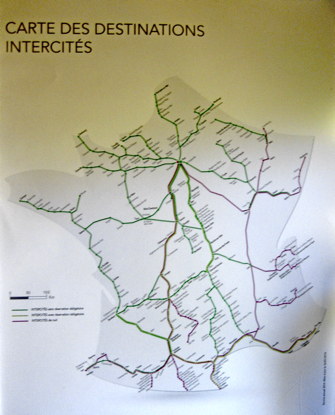
This is the map that they display inside the non-high-speed regional trains. Why is it tipped counterclockwise?
My theory is that the person who made it probably lives in this building on Rue Tholozé:
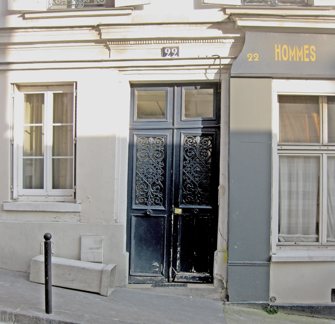
Take a closer look at the door:
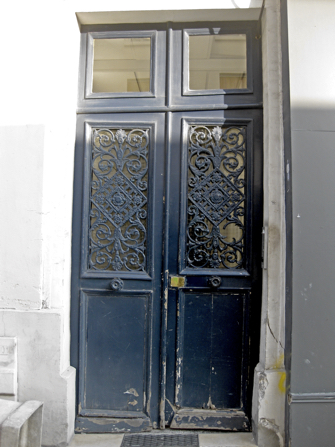
Why is it, like the map, tilted? Actually, the explanation here is fairly obvious: the building is settling in a way that resembles how French motor scooter riders drive — erratic, dismaying and potentially dangerous.
This is because Rue Tholozé, like Dalida’s bust, is in Montmartre, and the ground below Montmartre, unlike Dalida’s bust, is not solid. In fact, much of it isn’t even ground — it’s air.
Back in the days before Montmartre became one of the city’s most prized neighborhoods, for its village-like atmosphere, quaint buildings, shady streets and bronze breasts, it was the site of a giant underground quarry.
The bedrock was mostly high-grade gypsum, most of which was dug out, ground into plaster (“of Paris”!) and transferred one trowelful at a time to the walls of buildings all over town, including those that are now sinking slowly back into the pit whence they came.
Everywhere else they have a water cycle. Here in Paris we have a plaster cycle.
So that question was relatively simple. But, this being France, there are others that are not so easy to answer. Consider this building on Rue Moncey:
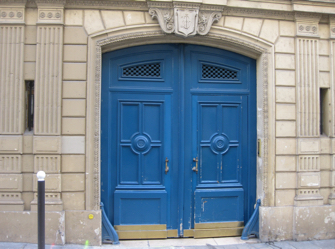
Now here’s a closeup of one of the two windows on either side of the door:
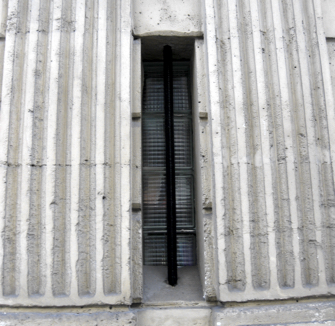
The question:
Given that the windows are no more than six inches wide, why do they need security bars?
The answer:
This must be the home of the author who wrote the famous bestseller “French Burglars Don’t Get Fat.”
It is true that French women (and men) do not, broadly and largely, tend to become broad and large. This is due to a number of factors, one of which, historically, has been a lack of bagels.
Until recently. In the past few years, American-style bagels have become popular in France. So popular that this place in Deauville is trying to cash in on the trend with a rather bizarre claim:
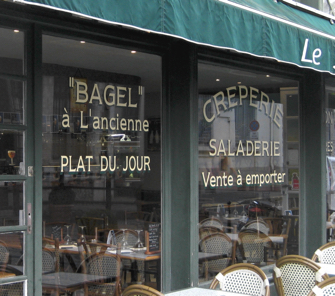
“A l’ancienne” means “in the old-fashioned style.” But bagels were virtually unknown here until about 2012 (as chronicled by one of Paris’s hindmost cultural commentators here). How ancienne is that?
In other words, saying “bagel à l’ancienne” in France is like saying “Jello shots like grandma used to make.” It implies that bagels, the most recent food fad in the country, are a venerable French tradition.
The question:
You call that a tradition?
The answer:
That’s not a tradition. This is a tradition:
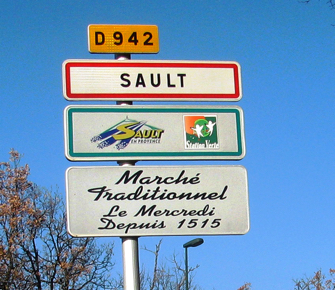
Photo from Wikimedia Commons.
The bottom panel of this sign, at the edge of the Provençal town of Sault, says, “Traditional market / Wednesdays / Since 1515.” Although, technically, it couldn’t properly be considered a “tradition” until at least 1516.
I mention this because I always insist on strict, meticulous precision. Well, maybe not always. Not for stuff like tax returns and wedding vows, but at least in road signs. Which brings me to the next conundrum…
The question:
If you are the author of this article and you’re driving from Sault through the equally Provençal town of Cavaillon three weeks ago looking for signs to Saint Rémy, where the hell are you supposed to go at the intersection pictured below?
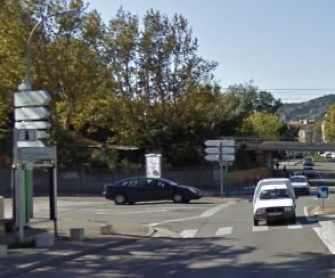
The answer:
Apparently, you’re supposed to go to hell.
In case anyone is wondering, I didn’t Photoshop the image to make the signs blank. Drivers approaching this intersection, in the center of a largish town with often heavy traffic, are confronted with a total of three signposts holding no fewer than 12 directional signs (one is obscured here by another sign), all bearing legends on only one side. The side they can’t see.
Having been given no information whatsoever, I went straight and promptly got lost. And stuck in a traffic jam. And figured out later that I should have turned left there.
Imagine how exasperating this was: blundering ahead cluelessly, going the wrong way, wasting time, realizing too late what I should have done instead… It reminded me of making out with my high school girlfriend.
Anyway, here’s another place where one might be ill-advised to go straight:
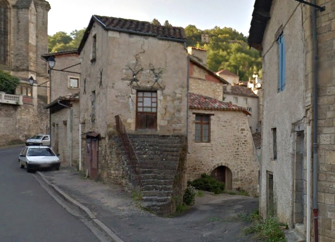
The question:
What happened here? Was the architect holding the blueprint upside down?
The answer:
This building in the southwestern town of Caylus must be where the old adage was coined, “You don’t have the right to yell ‘Fire!’ in a crowded room.”
But you do have the right to do just about anything you want with your domestic animals. At least that’s what I gather from the display on a building that I happened to see not long ago in a small town east of Paris:
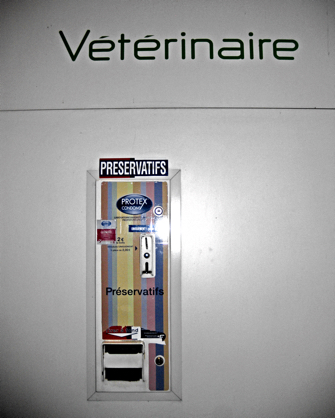
The question:
What is a condom machine doing on the wall of a veterinary clinic?
The answer:
Well, I guess there are people who… Ahh… As I said, some things are best left unexplained.
Have you seen something inexplicable in Paris, or anywhere in France? Send a photo (or at least a detailed description) to me in care of Paris Update contact@paris-update.com and I’ll try to explain “The Story Behind the Strangeness.”
© 2016 Paris Update
FavoriteAn album of David Jaggard’s comic compositions is now available for streaming on Spotify and Apple Music, for purchase (whole or track by track) on iTunes and Amazon, and on every other music downloading service in the known universe, under the title “Totally Unrelated.”
Note to readers: David Jaggard’s e-book Quorum of One: Satire 1998-2011 is available from Amazon as well as iTunes, iBookstore, Nook, Reader Store, Kobo, Copia and many other distributors.
